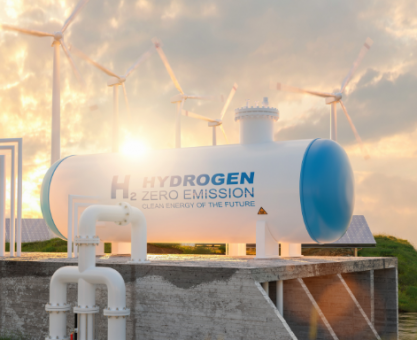Executive Summary
-
Solar power continues to evolve with groundbreaking innovations, making it a lucrative sector for investors.
-
Technological advancements in solar energy are reducing costs and increasing efficiency.
-
Investment opportunities abound in solar manufacturing, installation, and related energy storage technologies.
-
Understanding regulatory landscapes and sustainability trends is crucial for maximizing returns.
Introduction
The global demand for clean and renewable energy sources has never been higher. With climate change concerns and a push towards sustainability, solar power has emerged as a key player in the energy sector. For investors, this translates to a burgeoning market ripe with opportunities. This article delves into the innovations driving the solar power industry and explores why these advancements are crucial for investors looking to capitalize on the green energy boom.
Main Body
Definitions / Context
Solar power refers to the conversion of sunlight into electricity using photovoltaic (PV) cells or through solar thermal power systems. Over the past decade, the solar sector has seen significant technological advancements that have improved efficiency and reduced costs. Key terms include:
-
Photovoltaic Cells: Devices that convert sunlight directly into electricity.
-
Solar Thermal Power: Technology that uses sunlight to heat a fluid, which then produces steam to power electricity-generating turbines.
-
Net Metering: A billing mechanism that credits solar energy system owners for the electricity they add to the grid.
Benefits / Pros
-
Cost Reduction: Innovations in solar cell technology, such as bifacial panels, have reduced the cost of solar installations.
-
Increased Efficiency: New materials like perovskite are enhancing the efficiency of solar cells.
-
Energy Independence: Solar power reduces reliance on fossil fuels and enhances energy security.
-
Government Incentives: Many governments offer tax credits, rebates, and grants to encourage solar energy investments.
Risks / Cons / Challenges
-
Initial Investment: High upfront costs can be a barrier for some investors.
-
Regulatory Changes: Shifts in government policy can impact the viability of solar projects.
-
Technological Obsolescence: Rapid advancements may render older technologies obsolete.
-
Environmental Impact: Manufacturing processes for solar panels can be resource-intensive and environmentally damaging if not managed properly.
Step-by-Step Process: How to Invest in Solar Power
-
Research: Understand the different segments of the solar industry (manufacturing, installation, maintenance).
-
Market Analysis: Evaluate market trends and potential growth areas.
-
Regulatory Review: Familiarize yourself with local and international regulations and incentives.
-
Investment Strategy: Decide on direct investment in solar companies, or indirect investment via ETFs or mutual funds.
-
Risk Assessment: Analyze potential risks and develop a mitigation strategy.
ABC Solar Corp., a leading solar panel manufacturer, leveraged new perovskite technology to increase its market share by 30% over two years.
By focusing on R&D and strategic partnerships, the company reduced costs and improved panel efficiency.
These efforts attracted significant investor interest, resulting in a stock value increase of over 50%.
The case exemplifies how innovation and strategic execution in the solar sector can generate high returns for investors.— ABC Solar Corp.
Expert Tips / Strategic Insights
-
Diversify Investments: Epiidosis recommends spreading investments across different sectors within the solar industry, such as manufacturing, installation, and energy storage.
-
Leverage Technology: Keep abreast of emerging technologies and consider investments in companies leading the charge in innovation.
-
Monitor Regulations: Stay informed about policy changes, as governmental support can significantly impact solar investments.
Tools / Resources / Calculators
-
Solar Energy Estimator: Use online tools to estimate potential solar energy production and savings.
-
Renewable Energy Certificates (RECs): Understand how RECs work and their impact on investment returns.
-
Industry Reports: Access reports from organizations like the International Energy Agency for market insights.
Conclusion
Solar power innovations present a promising frontier for investors seeking sustainable and profitable ventures. By staying informed about technological advancements and regulatory landscapes, investors can position themselves to reap substantial returns. As the world shifts towards cleaner energy solutions, solar power will undoubtedly play a pivotal role.






















